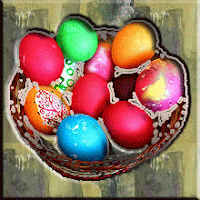 |
| The Arab Association of Civilization and Islamic Arts |
Definition
of Arabian Civilization & defending it through the following:
1.
Determining the concept of Arabian Civilization, its features, the Islamic Arts
and stating the civil and enlightenment roles of Arabian Civilization and its
effect on the Western Civilization through the bestowal in the different
fields.
2.
Demonstrating the civil values of the
architectural buildings and their arts in everywhere in the world (through
studying Architecture and Islamic Arts and confirming its enlightened
creation).
3.
Highlighting the civil role of Moslem Scientists in all civil fields:
scientific, intellectual and artistic fields, by defining their participations
to enrich the humanistic role in the contemporary global scientific awakening.
4. Organize
symposiums, establishing fairs and conferences confirming the conversation
among civilizations and to confirm the enlightenment role of the Islamic
Civilization, its science and arts, and establishing International Conference
for the Society every two years at least concerning on the relevant subjects
with the Society's goals.
5.
To interest with the readable, audible and visual mass media activity, and to
publish and writing books, magazines and newspapers, and radio and television
programs that confirming the uphold of the values of the Islamic cultures and
civilization and the continuation among generations.
6.
Authenticate the relations to connect with the Arab and Islamic countries'
scientists and artists, exchanging the cognition experiences among Arab
countries that interesting with the Arab and Islamic Civilization in all of its
civil aspects in cooperation with the Ministries of Culture and Arab League
(the Cultural Department).
7.
Conserve our Arabian and Islamic patrimony, maintaining it against damage,
tampering or the try forge the fixed self-facts of it. This can be made through
an active participation by defining the patrimony and the awareness of its
importance and maintaining the civil patrimony of the nation in the cooperation
with the concerned organizations, regionally and internationally inside and
outside the country.
8. The
awareness of the importance of the patrimonial industries and crafts by focus
on them, and how to conserving them as a source of the cognitive prosperity,
national income and to employ the youth in patrimonial crafts on scientific,
artistic and technical principals by habilitating them scientifically and
practically.
9.
To invite to conserve Arabic Language, rising and spreading and learning it
through an international level, and also the Arabic Handwriting and its
importance by establishing educational workshops and artistic fairs offering
artistic and handwriting works inspired from the Arabian Civilization Spirit,
to be participated by the concerned persons in the world.
10. To
recognize the concerned persons of the Arabian Civilization and Islamic Art in
the world, then to support the contact among them and to talk with them
permanently, and also the civilization departments in universities and the
concerned cultural institutions of civilizations and arts to make countries
progressing in a way fits with the present technological and scientific time of
the world and to be participated in common events.
11.
Trying to establish specialized committees in all civilization's branches to at
least participate in the contacting with the public and to spread the awareness
of the importance of each committee, such as (Arabic language, Handwriting,
Islamic Architecture, Islamic design, decoration and its arts, legislation,
physical sciences …etc).
12. Making
agreements and cooperation among the Society, the concerned organizations and
authorities with the Islamic Civilization's field through (Arab League, ISISCO,
UNISCO, the specialized faculties, ACROME Organization for Museums and
Specialized Research Institutes, IRISCA – the International Organization for
Science, Arts, Literature and History that following Islamic World Organization
& Ministries of Culture) and establishing common events and activities with
such bodies.
13. Creating
contact points to talk with the concerned different creeds, cultures and
religions to realize peace and welfare, then to refer to the positive role of
the others' culture through the scientific talks that aiming to define Islam's
lenience and to live with the others.
14.
Organizing cultural missions for the Society's members in the cultural houses
through the Republic to aware the youth with the importance of the civil role
of Islamic Arts and Civilization.
15.
Supporting the relation between the Society, Arab Leagues federations, the
International Federation of Islamic World and Islamic World Association to be
participated in common events with such institutions, and to try to create a
curriculum for the students in the different stages to define the Islamic
Civilization, its arts and role in making the contemporary civilization.
16.
Encourage researchers and authors to write and prepare the Master and PhD
thesis in Arabian Civilization and Islamic Arts, and in different writings in
such field.
17.
Issue firm scientific magazine for Society to encourage researches writing and
preparation in this civil field.
The
Society is honored to receive the opinions and notes of all the concerned
persons of the Arabian Civilization and Islamic Arts in all of their scientific
and artistic aspects.
As
we'd like to submit any useful suggestion for the Society to perform its task.
Society General
Secretary
Fathy El Mula
|
Chairman
Prof. Dr.
Mohamed Aly Zenhom
Prof. in Faculty
of Applied Arts
Helwan
University
|






















